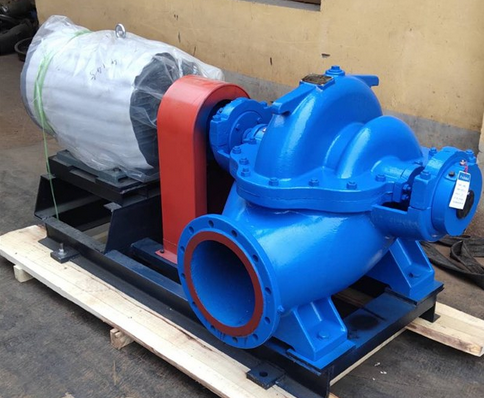Double suction pump parts cleaning and maintenance
The cleaning and maintenance of double suction pump parts is an important part to ensure the long-term stable operation of the pump. The following is a detailed description of this process:
I. Parts cleaning
1. Preparation before cleaning
Cut off the power supply: Make sure the pump has stopped running and cut off the power supply to prevent accidental startup.
Empty the medium: If the pump contains liquid or gas, the medium in the pump must be emptied first to avoid leakage or contamination during the cleaning process.
Prepare tools: Prepare necessary cleaning tools, such as brushes, cloths, special cleaning agents, etc.
2. Cleaning steps
Disassemble parts: Separate the parts to be cleaned from the pump body according to the disassembly steps.
Preliminary cleaning: Use a clean cloth or brush to remove large particles of impurities and dirt on the surface of the parts.
Deep cleaning:
Impeller and pump casing: Use clean water or special cleaning agents, combined with brushes and other tools, to thoroughly clean the dirt on the impeller surface and the inside of the pump casing. For dirt that is difficult to clean, the concentrated water pressure scraping method can be used.
Bearings and shaft seals: Bearings and shaft seals are lubricating parts, and special care should be taken when cleaning. The bearing bushing and bearing can be cleaned with gasoline to remove grease and rust, but care should be taken to avoid washing with water to avoid damaging the bearing. After cleaning, the shaft and ball need to be oiled for protection and to increase lubricity.
Other parts: According to the material and characteristics of the parts, choose the appropriate cleaning method and cleaning agent for cleaning.
3. Post-cleaning treatment
Check the cleaning effect: After cleaning, carefully check the cleaning effect of the parts to ensure that there is no residual dirt.
Anti-rust treatment: For parts that need to be parked for a long time, anti-rust measures should be taken, such as applying anti-rust oil or packaging in anti-rust bags.
2. Parts maintenance
1. Regular inspection
Seals: Check whether the seals are worn or aged, and replace them in time if necessary.
Bearings: Check the lubrication status and wear of the bearings, and add or replace lubricating oil regularly.
Motor: Check the operating status and insulation performance of the motor to ensure the normal operation of the motor.
2. Replace damaged parts
Replace damaged parts in time according to the use and wear of the parts, such as sealing rings, stuffing sleeves, etc.
3. Lubrication and maintenance
Keep lubricated parts (such as bearings) in good lubrication condition and add or replace lubricating oil regularly to reduce wear and friction.
4. Storage and protection
Pumps and parts that are not used for a long time should be stored in a dry, ventilated environment without corrosive gases to prevent rust and corrosion.





